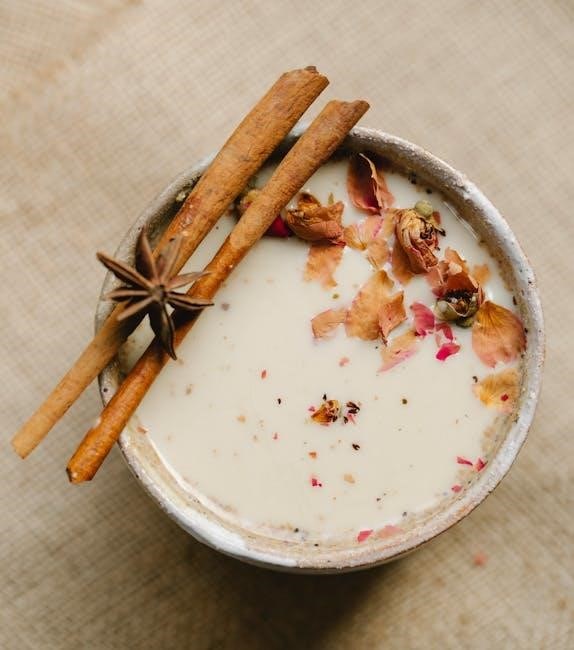
Discover the simplicity and joy of crafting homemade herbal teas with customizable blends that promote health and wellness. From soothing stress to boosting immunity, these easy recipes offer natural solutions for everyday well-being.
Why Make Your Own Herbal Teas?
Creating your own herbal teas allows you to tailor flavors and health benefits to your preferences. By using fresh, high-quality ingredients, you ensure maximum potency and avoid unwanted additives found in commercial products. Homemade herbal teas are cost-effective, as buying herbs in bulk often saves money. Additionally, you can experiment with unique blends that cater to specific needs, such as relaxation, energy, or digestion. This process also fosters a connection to nature and wellness, giving you control over what you consume. Plus, homemade teas make thoughtful gifts, sharing the joy of natural health with others. It’s a simple yet empowering way to prioritize your well-being.
Benefits of Customizable Herbal Blends
Customizing herbal tea blends offers unparalleled flexibility to suit individual preferences and health goals. By selecting specific herbs, you can tailor teas to address particular needs, such as improving sleep, boosting energy, or enhancing digestion. This personalization allows you to avoid ingredients that may cause allergies or sensitivities. Additionally, customizable blends enable you to incorporate seasonal or locally sourced herbs, ensuring freshness and sustainability. You can also adjust the strength and flavor profile to your liking, creating unique combinations that cater to your taste buds. This approach fosters creativity and empowers you to take charge of your wellness journey, making each cup a reflection of your personal health and lifestyle choices.
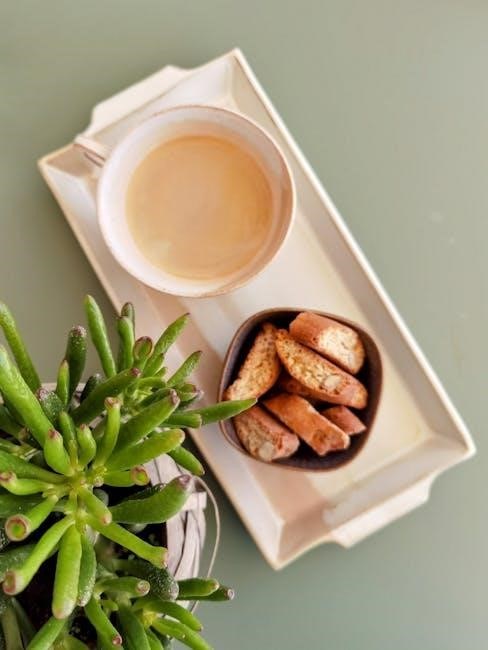
Health Benefits of Herbal Teas
Herbal teas offer numerous health benefits, including boosting immunity, improving sleep quality, aiding digestion, and reducing stress. Many blends are rich in antioxidants, promoting overall wellness naturally.
Immunity-Boosting Properties
Herbal teas are renowned for their ability to enhance immune function, reducing the risk of illnesses like colds and flu. Ingredients such as echinacea, known for its immune-supporting properties, and elderberry, rich in antiviral compounds, are often used in blends. These herbs help strengthen the body’s natural defenses, promoting overall health. Garlic and ginger, with their antimicrobial effects, further contribute to immune system balance. By incorporating these ingredients into homemade herbal tea recipes, individuals can create potent, caffeine-free drinks that support resilience against infections. Regular consumption of such teas can lead to improved vitality and a reduced likelihood of seasonal ailments. This makes them a natural, effective way to bolster immunity year-round.
Enhanced Sleep Quality
Herbal teas are a natural way to improve sleep quality, offering a calming alternative to stimulants. Ingredients like chamomile, lavender, and valerian root are known for their soothing effects, helping to relax the mind and body. These teas work by reducing anxiety and stress, which are common barriers to restful sleep. Regular consumption can regulate sleep patterns and improve the duration of deep sleep. Additionally, the absence of caffeine ensures they won’t interfere with sleep cycles. For optimal results, herbal teas can be sipped 30–60 minutes before bedtime, combined with a calming pre-sleep routine. This holistic approach promotes better sleep and leaves you feeling refreshed and rejuvenated.
Support for Digestion and Liver Health
Herbal teas can greatly benefit digestion and liver health by incorporating ingredients like peppermint, dandelion root, and ginger. These herbs soothe the digestive tract, reducing bloating and indigestion. Dandelion root, in particular, supports liver function by aiding detoxification processes. Ginger stimulates digestive enzymes, enhancing nutrient absorption and relieving nausea. To promote liver health, consider blending milk thistle with nettle leaves, as they are known to support liver cleansing and overall well-being. Regular consumption of these teas can improve digestion, prevent liver strain, and contribute to a balanced digestive system. These natural remedies offer a gentle, effective way to maintain gastrointestinal and hepatic health without harsh side effects.
Stress Relief and Anxiety Reduction
Herbal teas are a natural and effective way to alleviate stress and anxiety. Ingredients like chamomile, lavender, and lemon balm are renowned for their calming properties, promoting relaxation and reducing nervous tension. Chamomile tea, for instance, binds to GABA receptors in the brain, inducing a soothing effect. Lavender tea helps lower cortisol levels, while lemon balm enhances mood and focus. Adaptogens such as ashwagandha and holy basil can also be added to tea blends to balance stress hormones and improve mental clarity. Drinking these teas regularly can create a sense of calm, making them an excellent addition to a daily self-care routine. They provide a gentle, non-habit-forming alternative to traditional stress-relief methods.
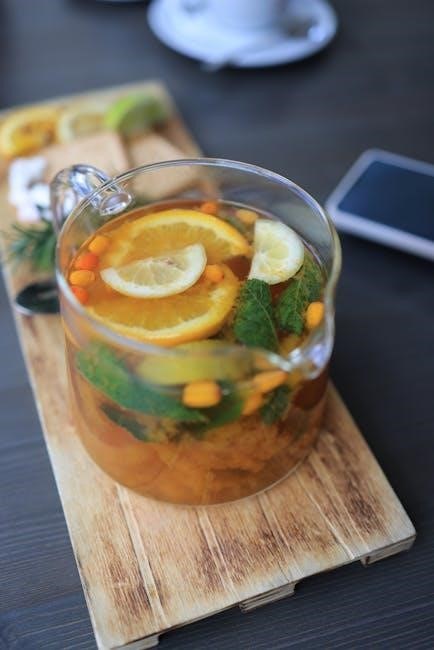
Antioxidant-Rich Ingredients
Herbal teas packed with antioxidants offer a delicious way to protect your body from oxidative stress and inflammation. Ingredients like hibiscus, rose hips, and green tea are rich in vitamin C and polyphenols, which combat free radicals and promote overall health. Berry-based teas, such as blueberry and raspberry, are high in anthocyanins, powerful antioxidants that support heart health and brain function. Turmeric and ginger add curcumin and gingerol, which are potent anti-inflammatory compounds. Incorporating these ingredients into your tea blends not only enhances flavor but also boosts their nutritional value. Using fresh, organic herbs ensures maximum antioxidant potency. These teas are a simple yet effective way to support long-term wellness and vitality.
Popular Herbal Tea Ingredients
Common ingredients include chamomile, calendula, hibiscus, ginger, turmeric, peppermint, lemon balm, lavender, and rose hips. Each offers unique flavors and health benefits, making them versatile for blending.
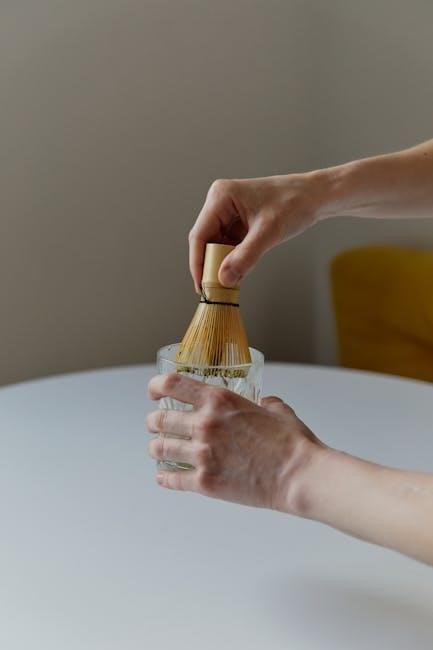
Hibiscus and Rose Hips for Vitamin C
Hibiscus and rose hips are rich in vitamin C, making them excellent for boosting immunity and fighting off infections. Hibiscus flowers add a tart, fruity flavor, while rose hips provide a sweet, earthy note. Both are packed with antioxidants and can help reduce inflammation. When combined, they create a refreshing and nutritious tea blend. Hibiscus is also known to lower blood pressure and aid in digestion, while rose hips support skin health and energy levels. For a vibrant tea, steep 1-2 tablespoons of dried hibiscus flowers and rose hips in boiling water for 5-7 minutes. Strain, sweeten with honey if desired, and enjoy hot or iced year-round.
Chamomile for Relaxation
Chamomile is a timeless herb renowned for its calming effects, making it a staple in homemade herbal teas. Its soothing properties help alleviate stress, anxiety, and restlessness, promoting a peaceful sleep. Chamomile tea is also known to ease muscle tension and soothe digestive discomfort. The apigenin in chamomile binds to brain receptors, reducing anxiety and fostering relaxation. To brew, steep 1 tablespoon of dried chamomile flowers in 8 oz of boiling water for 5-7 minutes. Strain and enjoy with a touch of honey or lemon for enhanced flavor. This tea is perfect for unwinding after a busy day or as a bedtime ritual to ensure deep, restorative sleep naturally.
Peppermint and Lemon Balm for Refreshment
Peppermint and lemon balm are a refreshing duo in homemade herbal teas, offering invigorating flavors and numerous health benefits. Peppermint cools the body with its menthol properties, aiding digestion and mental clarity, while lemon balm uplifts the spirit with its light citrus notes; Together, they create a harmonious blend that soothes and refreshes. To prepare, steep 1 teaspoon of dried peppermint leaves and 1 teaspoon of lemon balm in 8 oz of boiling water for 5-7 minutes. Strain, then enjoy with a touch of honey or lemon. This tea is perfect for a midday pick-me-up or a post-meal digestive aid, providing a refreshing and rejuvenating experience any time of day.
Ginger and Turmeric for Inflammation
Ginger and turmeric are potent anti-inflammatory ingredients often combined in homemade herbal teas for their therapeutic benefits. Ginger contains gingerol, which aids digestion and reduces nausea, while turmeric’s curcumin fights inflammation and improves joint health. To make this blend, steep 1-inch slices of fresh ginger and ½ teaspoon of turmeric powder in 8 oz of boiling water for 10-12 minutes. Strain and add a drizzle of honey for sweetness. For enhanced absorption, include a pinch of black pepper. This tea is ideal for alleviating arthritis symptoms, soothing muscle pain, and promoting overall well-being. Its warming properties make it a comforting choice during colder months or when seeking natural pain relief.
Calendula and Lavender for Skin Health
Calendula and lavender are renowned for their skin-enhancing properties, making them a popular choice for homemade herbal teas. Calendula, with its antiseptic and anti-inflammatory traits, promotes wound healing and soothes skin irritations. Lavender, known for its calming effects, reduces redness and acne while offering a relaxing aroma. To brew, combine 1 tablespoon of dried calendula petals, 1 teaspoon of dried lavender buds, and 1 quart of boiling water. Steep for 5-7 minutes, then strain. This tea can be consumed hot or iced, and the cooled liquid can even be used as a toner for glowing skin. Regular consumption supports skin health and provides a natural glow.
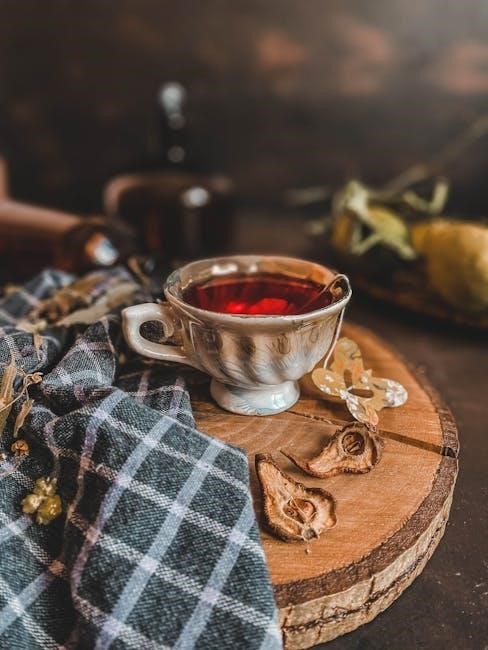
Easy Herbal Tea Recipes
Easy herbal tea recipes combine simple ingredients like flowers, herbs, and spices. Perfect for beginners, these blends offer quick, delicious, and healthy options for daily enjoyment.
Classic Herbal Tea Blends
Classic herbal tea blends are timeless combinations that offer proven health benefits and delightful flavors. Popular blends include chamomile, lavender, and valerian root for relaxation, while peppermint, lemon balm, and ginger promote digestion. Another favorite is hibiscus, rose hips, and orange peel, creating a fruity, vitamin C-rich infusion. These blends are easy to prepare and require minimal ingredients, making them perfect for everyday use. They cater to various health needs, from calming the mind to boosting energy. Many classic recipes have been passed down through generations, ensuring their potency and appeal. Experimenting with proportions allows you to tailor flavors to your taste, making these blends versatile and enjoyable for all.
Seasonal and Holiday-Themed Recipes
Seasonal and holiday-themed herbal teas add a festive touch to special occasions. For winter, try a warming blend of cinnamon, nutmeg, and ginger to combat the cold. Spring blossoms like rose petals and jasmine create a floral, refreshing infusion. Summer teas featuring mint, lemongrass, and hibiscus are perfect for hot days. Autumn-inspired blends with apple cinnamon and pumpkin spice evoke cozy vibes. Holiday recipes like spiced cranberry orange or chai-like mixes with cloves and cardamom are ideal for celebrations. These themed teas not only align with the season but also make thoughtful gifts when packaged in decorative jars or bags. They bring joy and wellness to every time of year.
Caffeine-Free Alternatives
Caffeine-free herbal teas are perfect for those seeking a soothing, non-stimulating beverage. Blends like chamomile, lavender, and lemon balm promote relaxation without any caffeine. Fruit-based teas, such as berry or citrus infusions, offer refreshing flavors. Rooibos, a caffeine-free red tea from South Africa, is rich in antioxidants and ideal for all-day enjoyment. Herbal mixes like peppermint, ginger, and hibiscus provide invigorating options without the caffeine kick. These alternatives are great for unwinding, improving sleep, and offering a calming experience. They cater to health-conscious individuals and those sensitive to caffeine, making them a versatile choice for any time of day.
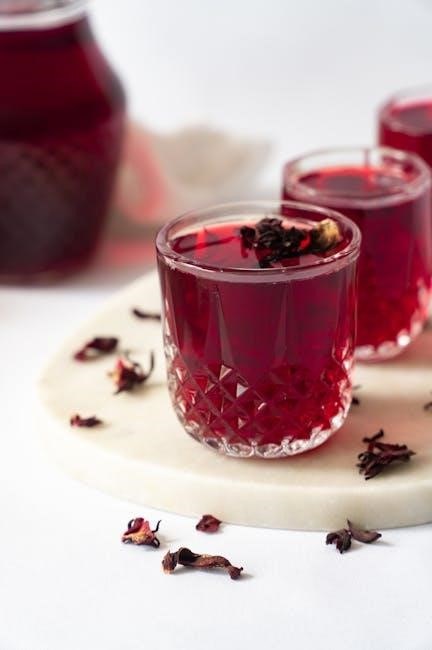
Customizing Your Herbal Tea Blends
Customizing herbal teas allows you to tailor flavors and benefits to your preferences. Experiment with herbs, spices, and flowers to create unique blends that suit your needs.
Understanding Herb Ratios and Proportions
Mastering herb ratios is key to balanced, flavorful teas. Start with a base herb (60-70%), add secondary herbs (20-30%), and finish with accents (5-10%).
For example, in a calming blend, chamomile or lavender might dominate, while peppermint or ginger could enhance flavor. Adjust proportions based on strength and desired effects.
Roots and seeds often require smaller amounts due to potency, while flowers and leaves can be more generous. Experiment in small batches to refine your ratios for perfect harmony.
Record your blends to replicate favorites and share recipes. Balancing flavors and benefits ensures each cup is tailored to your taste and wellness goals.
Adding Spices for Extra Flavor
Spices can elevate herbal teas, adding depth and warmth. Cinnamon, ginger, and nutmeg are popular choices for their aromatic, comforting qualities.
Start with small amounts (1/4 teaspoon per cup) and adjust to taste. Spices like cardamom or cloves can complement floral or fruity notes in herbal blends.
For a chai-inspired tea, combine cinnamon sticks, ginger slices, and a pinch of black pepper. Experiment with ground or whole spices for varying intensities.
Grinding whole spices before adding them releases their oils, enhancing flavor. Balance spices with herbs or flowers for a harmonious blend that delights the senses.
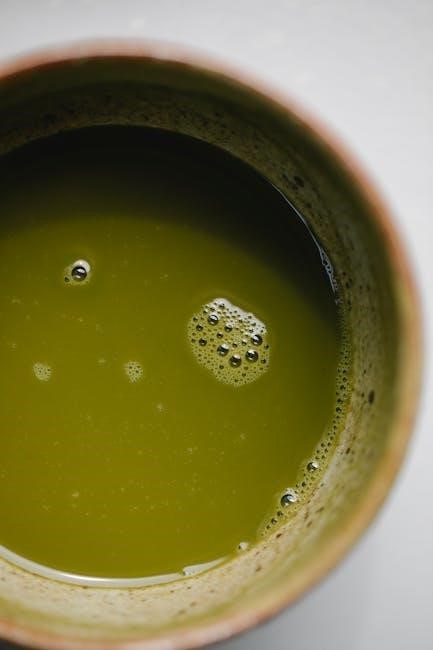
Infusion Tips for Maximum Potency
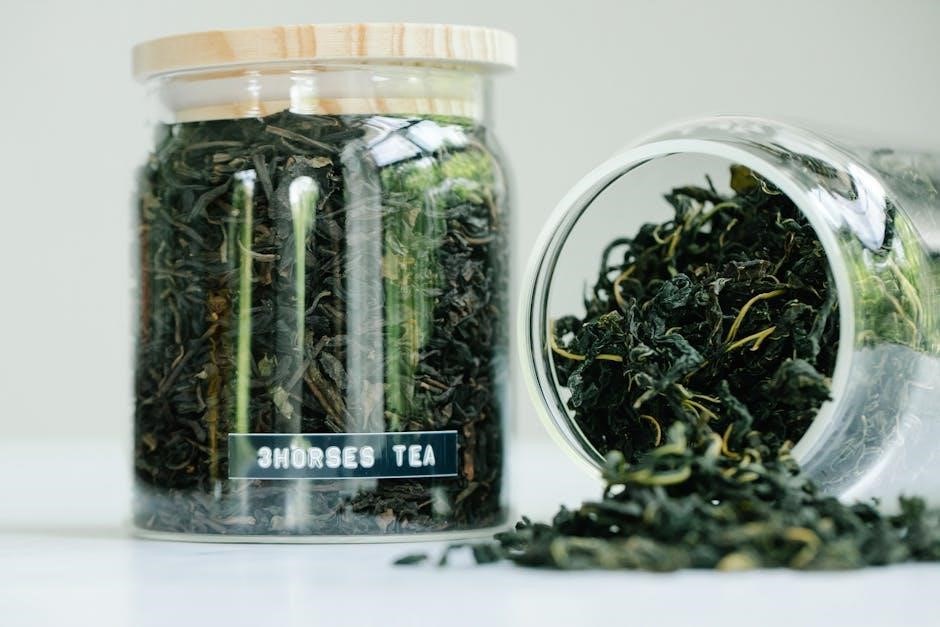
To maximize the potency of herbal teas, steeping time and temperature are crucial. Most herbs require 5–10 minutes of infusion, while delicate flowers or leaves may need only 3–5 minutes. Use boiling water for roots and bark, but opt for cooler water (160–170°F) for leaves and flowers to avoid bitterness.
Cold infusions are ideal for sensitive herbs like chamomile, steeping overnight in the fridge. Fresh herbs typically require double the amount of dried ones. Use filtered water for purity and avoid over-steeping, as it can reduce flavor and nutritional value.
For enhanced extraction, cover the pot during steeping to retain volatile oils. Gently shake the infusion midway for even extraction. Strain thoroughly before serving for a smooth, balanced brew.
Sustainability and Cost-Effectiveness
Making herbal teas at home is eco-friendly and budget-friendly. Use reusable containers, avoid single-use packaging, and buy ingredients in bulk to reduce costs and waste long-term.
Eco-Friendly Packaging Options
When storing or gifting homemade herbal teas, opt for eco-friendly packaging to minimize environmental impact. Reusable glass jars or tin containers are excellent choices as they are durable and recyclable. Consider biodegradable or compostable materials like paper pouches or plant-based plastics for a sustainable option. For a personal touch, add hand-drawn labels or decorative twine. These methods not only reduce waste but also enhance the charm of your herbal tea creations. By choosing eco-conscious packaging, you align with the sustainable ethos of homemade herbal teas while offering a visually appealing product to others.
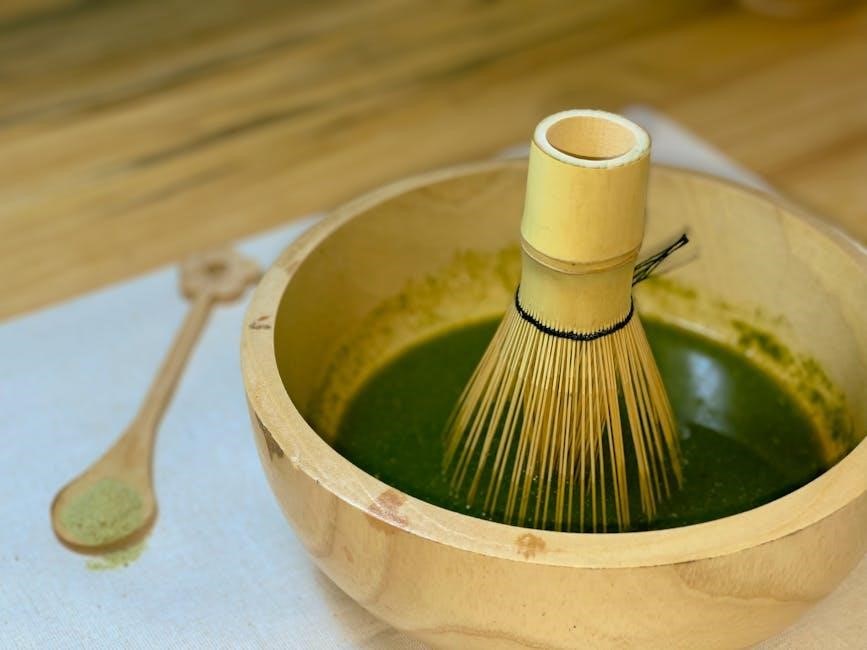
Using Locally Sourced Ingredients
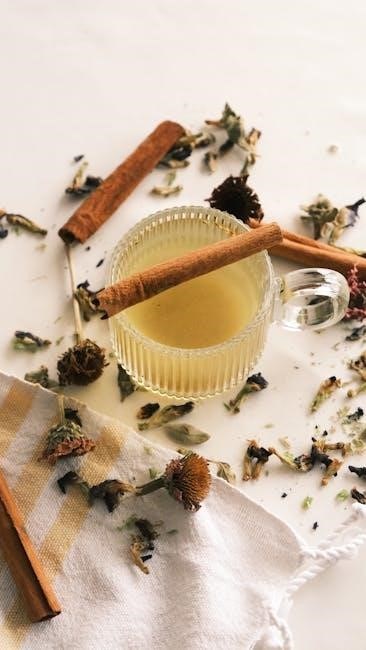
Using locally sourced ingredients for homemade herbal teas promotes sustainability and supports local economies. Fresh herbs like peppermint, chamomile, and lemon balm can often be found at farmers’ markets or grown in your own garden. Sourcing ingredients locally reduces carbon footprint and ensures freshness, as they haven’t traveled long distances. Many communities also offer organic options, free from pesticides and artificial additives. By choosing local suppliers, you contribute to environmental conservation and foster stronger connections with local growers. This approach also allows for seasonal variety, as different herbs thrive at different times of the year, keeping your tea blends diverse and vibrant.
Reducing Waste in the Kitchen
Reducing waste in the kitchen is a key aspect of sustainable homemade herbal tea preparation. By using every part of the herbs, such as stems and leaves, you minimize scraps. Composting leftover plant material helps divert waste from landfills and enriches your garden soil. Reusable containers or cloth bags can store loose herbs, avoiding single-use packaging. Buying ingredients in bulk further reduces waste from individual packaging. Creative repurposing, like turning old jars into herb storage, also contributes to a zero-waste approach. These practices not only benefit the environment but also encourage a mindful and resourceful cooking process, aligning with the eco-conscious values of homemade herbal tea enthusiasts.
Word count: 111
Creating homemade herbal teas offers a rewarding journey of health, customization, and sustainability. From understanding benefits to crafting blends, it’s a delightful way to nourish body and soul while embracing eco-friendly practices. Enjoy experimenting and savoring the flavors of nature in every cup!
Final Thoughts on Making Herbal Teas at Home
Making herbal teas at home is a simple yet rewarding process that allows for endless creativity and personalization. By experimenting with different herbs, spices, and botanicals, you can craft blends that cater to your specific needs, whether it’s boosting immunity, improving sleep, or simply relaxing. The ability to control ingredients ensures a healthier, more sustainable alternative to commercial products. Sharing your creations with friends and family can also foster a sense of community and joy. Embrace the journey of discovering new flavors and benefits, and don’t hesitate to explore and innovate. Your homemade herbal teas are more than just drinks—they’re a celebration of nature’s bounty and your unique touch.
Encouragement to Experiment and Share Recipes
Herbal tea crafting is a journey of discovery, inviting you to explore endless flavor combinations and health benefits. Don’t be afraid to experiment with unique herb pairings or adjust ratios to suit your palate. Sharing your creations with others can spark joy and foster connections. Whether through hosting tea-tasting gatherings or gifting custom blends, your recipes can bring people together. Encourage others to join you in this creative process, as sharing knowledge and ideas fuels inspiration. Embrace the satisfaction of crafting something nourishing and personalized, and let your passion for herbal teas inspire others to do the same. Happy brewing and sharing!
